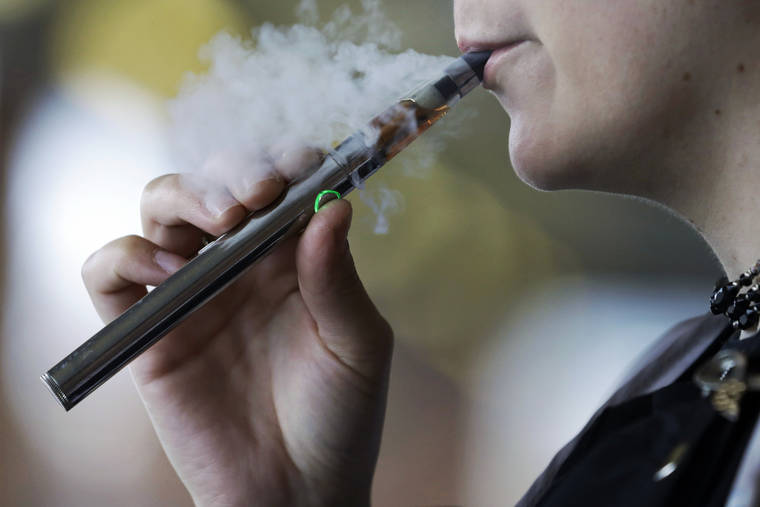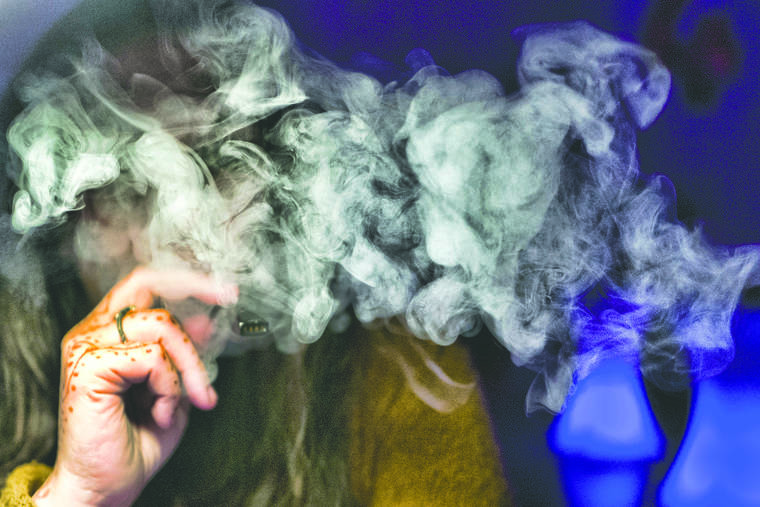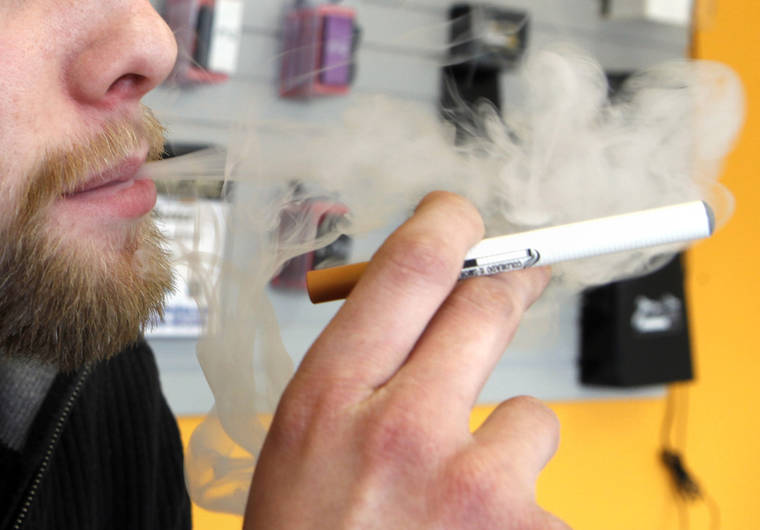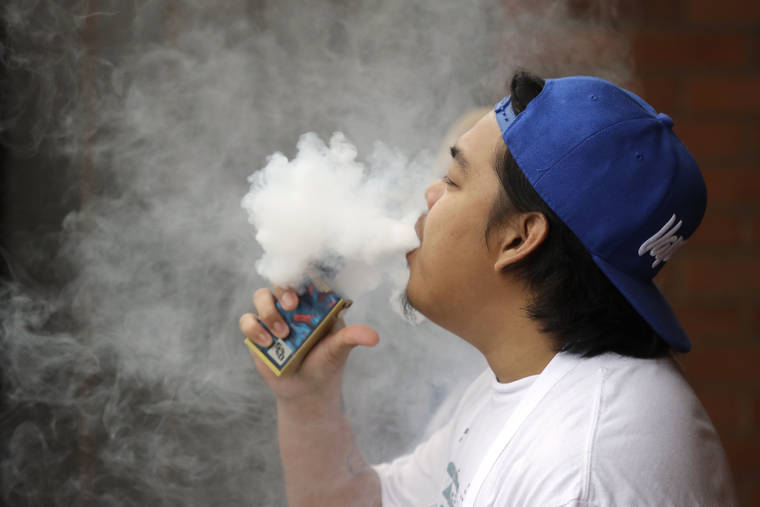Nearly half of Hawaii high school students and a third of middle school students have tried e-cigarettes, data released by the Centers for Disease Control and Prevention shows.
In 2019, 48.3% of high school students and 30.6% of middle school students surveyed in the state said they had tried e-cigarettes at some point, the 2020 report released Thursday as part of the agency’s Youth Risk Behavioral Surveillance System shows.
Nationally, 50.1% of high schoolers said they’d tried vaping, up from 42.2% in 2017. Data for Hawaii students reporting having tried e-cigarettes was not collected in 2017.
The American Lung Association in Hawaii on Friday said the data punctuates the need for action in light of continuing reports of severe lung illnesses and deaths linked to vaping. That need is further compounded by the current COVID-19 pandemic, making those with compromised lungs more vulnerable for the worst effects.
The report also shows that 30.6% of high schoolers and 17.7% of middle schoolers in Hawaii are currently e-cigarette users. In 2017, 25.5% of — or one in four — high school students reported regular use of e-cigarettes.
Further, the data shows that more than half of all Native Hawaiian and Pacific Islander high school students have ever tried e-cigarettes while 45% of middle school Pacific Islanders have said the same.
“The elevated vaping numbers in Hawaii are disheartening, especially knowing that Native Hawaiians and Pacific Islanders have higher vaping rates than the rest of the youth in Hawaii. Ending the sale of all flavored tobacco products, including mint and menthol as well as products like flavored e-cigarettes, cigars and cigarettes is a critical step that must be taken immediately to curb the youth e-cigarette epidemic,” said Pedro Haro, executive director of the American Lung Association in Hawaii.
Haro called on legislators to act in the upcoming session “to protect our young people by including mint and menthol in a comprehensive prohibition of all flavored tobacco products.”
In July, the state Senate Ways and Means Committee unanimously advanced a bill banning flavored tobacco products, however, the House disagreed with the Senate’s amendments, so the bill died.
The figures for e-cigarette use are far higher than tobacco use, with 17.8% of Hawaii high schoolers having said they’d ever tried smoking cigarettes, according to the data. Nationally, 24.1% of high school students admitted to having smoked tobacco.
Earlier this month, the association launched its revised N-O-T Not On Tobacco youth tobacco cessation and INDEPTH alternative to suspension programs and facilitator training courses. N-O-T is an evidence-based program with an impressive success rate, with approximately 90% of teens who participate in the program cutting back or quitting tobacco all together. The revision goes beyond cigarette smoking to include all tobacco products, with an increased focus on nicotine dependence, e-cigarettes and multiple tobacco product use.
Both the N-O-T and INDEPTH programs support comprehensive tobacco control policies in school or community settings and support the American Lung Association’s measures to eliminate tobacco use by youth and to reduce the youth e-cigarette prevalence rate to 15% by 2025.
“Our state needs to invest in helping youth quit tobacco, including e-cigarettes – as well as enact flavored tobacco restrictions. The Lung Association’s N-O-T program evaluation shows that along with quitting smoking or vaping, youth also have been shown to have better grades, higher motivation, fewer absences, better relationships with teachers and fewer school tobacco use policy violations,” Haro said.






